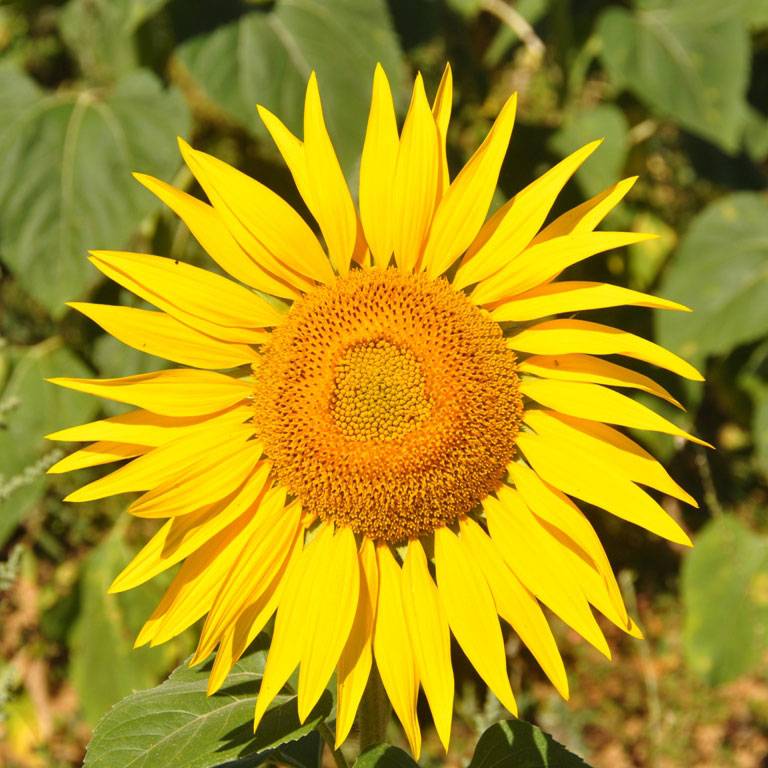The Sunflowers

Sunflowers are cultivated primarily for their oil and seeds. It is an annual plant with a pivoting root system that develops deep in the soil. Atop the branchless stem that reaches a height of 2 meters, is a leaning inflorescence called a capitulum. This receptacle holds the flowers.
The pollinisation is carried out by insects. Honeybees are essential to the sunflower.
Nectar production varies from one variety to the other and depends on the weather. Each flower can produce from 0.02 mg of nectar per day to more than 6 mg. The sugar content varies from 30 to 50% and can reach 60% in warmer climates. Nectar secretion is maximal between 10 a.m. and 2 p.m.
It is common for a single beehive to produce more than 50 kilos of Sunflower Honey or about 1500 kilos per hectare.
The sunflower is also a rich source of pollen, but honeybees seem to prefer corn pollen which is available at the same time of year. Pollen production is more abundant in the morning.
Sunflower Honey is a product of summer when the population of worker bees is at its highest. However, the sudden increase in activity can exhaust the bees quickly leaving a diminished population at the end of the season.
Try our Sunflower Honey!
Discover the origins of our other honeys:
